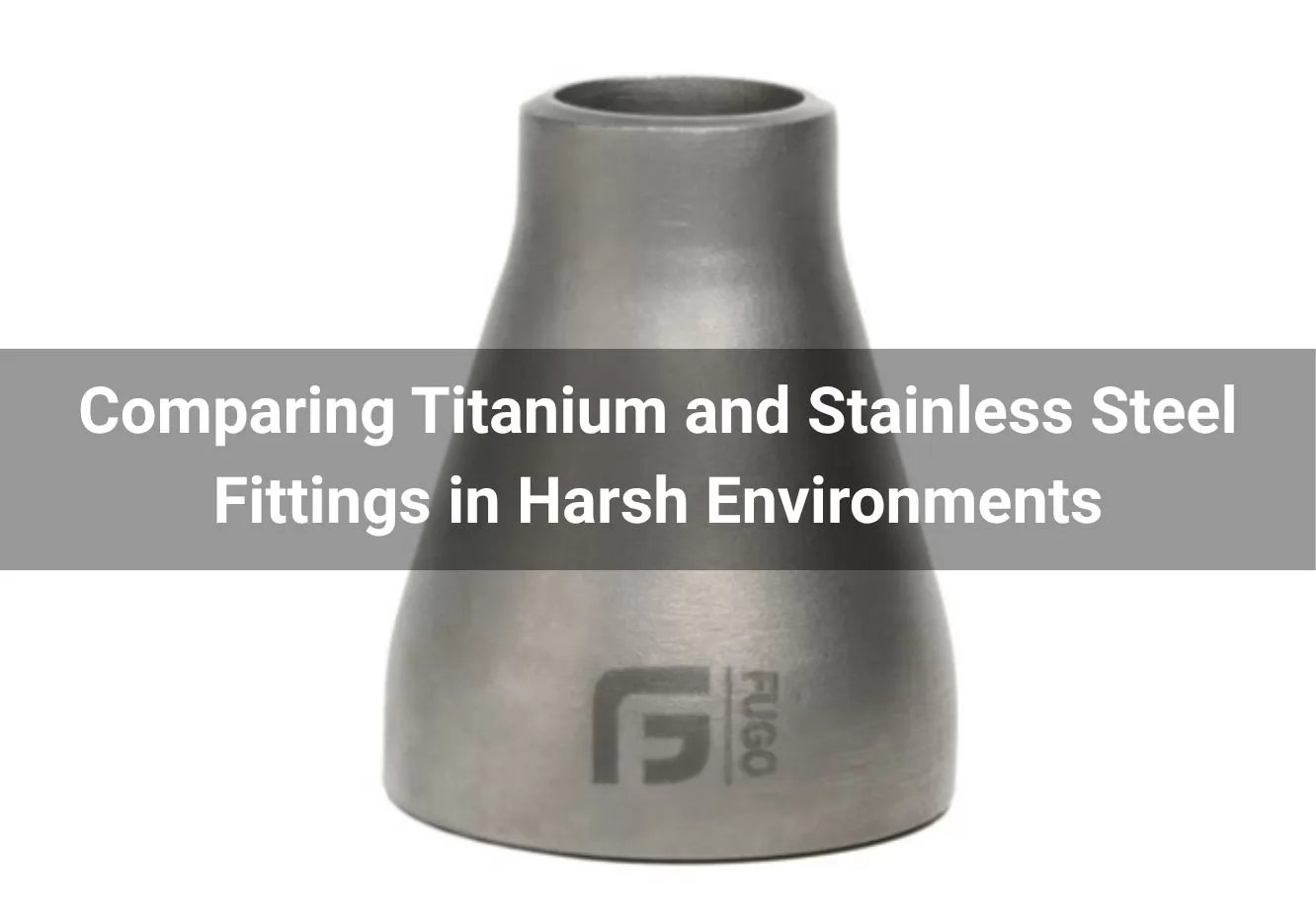


Harsh environments, such as those in marine, chemical processing, aerospace, and oil and gas industries, require materials that can endure extreme corrosion, temperature variations, and mechanical stress. Titanium and stainless steel fittings are popular choices due to their durability, but they differ in performance, cost, and applicability. This article examines how titanium and stainless steel fittings compare in terms of corrosion resistance, strength-to-weight ratio, temperature performance, and cost-effectiveness, offering guidance on their use in demanding conditions.
Corrosion resistance is vital in harsh environments, especially in marine or chemical applications exposed to saltwater, acids, or other corrosive substances. Titanium fittings stand out due to their formation of a stable oxide layer, which provides exceptional resistance to corrosion in aggressive settings like seawater or acidic environments. This makes titanium ideal for offshore platforms, desalination facilities, and chemical reactors. Stainless steel fittings, particularly grades like 316 or 904L, also resist corrosion well in chloride-rich or mildly acidic conditions. However, they are more susceptible to pitting and crevice corrosion in highly saline or acidic environments compared to titanium. While stainless steel is suitable for less severe applications, such as food processing or urban infrastructure, titanium’s superior corrosion resistance makes it the go-to choice for extreme conditions.
The strength-to-weight ratio is a crucial factor in industries like aerospace or automotive, where reducing weight is a priority. Titanium fittings offer an outstanding strength-to-weight ratio, delivering strength similar to high-grade stainless steels but at roughly half the density. This lightweight property reduces system weight, enhancing fuel efficiency in aerospace or simplifying installation in complex structures. Stainless steel fittings, while strong and reliable, are much heavier due to their higher density. Grades like 304 or 316 provide excellent mechanical strength for heavy-duty uses, such as pipelines or structural components in oil and gas facilities, but their weight can be a limitation in weight-sensitive applications. Titanium’s advantage in this area makes it perfect for scenarios requiring both strength and weight reduction, while stainless steel is preferred for static, robust installations.
Harsh environments often involve extreme temperatures, from cryogenic conditions in liquefied natural gas (LNG) processing to high-heat operations in power plants or chemical facilities. Titanium fittings perform reliably across a wide temperature range, retaining strength and corrosion resistance at cryogenic levels and up to about 600°C (1,112°F). This versatility suits titanium for aerospace components or cryogenic storage systems. Stainless steel fittings, depending on the grade, also handle extreme temperatures well, with austenitic grades like 316 performing in cryogenic conditions and high-temperature alloys like 310 or Inconel excelling in heat-intensive settings. However, stainless steel may experience scaling or reduced corrosion resistance at very high temperatures in oxidative environments. Titanium’s consistent performance across a broader temperature range often gives it an advantage in thermally stressful applications.
Cost plays a significant role in selecting fittings for harsh environments, often influencing their practical use. Titanium is considerably more expensive due to its complex extraction, processing, and relative scarcity compared to iron-based alloys. This high cost can limit its use to specialized applications, such as aerospace, medical devices, or premium marine systems. Stainless steel fittings, on the other hand, are more affordable, with various grades available to meet different performance and budget requirements. Their cost-effectiveness makes stainless steel a practical option for large-scale projects like pipelines, wastewater treatment plants, or architectural structures where corrosion resistance is needed but extreme conditions are less frequent. Additionally, stainless steel is easier to fabricate and weld, lowering installation costs, while titanium requires specialized techniques due to its reactivity at high temperatures. The decision between the two often depends on balancing performance needs with budget constraints.
The choice between titanium and stainless steel fittings hinges on the specific requirements of the environment and project priorities. Titanium fittings are best for applications demanding top-tier corrosion resistance, weight savings, and temperature tolerance, such as aerospace components, marine vessels, or chemical plants handling highly corrosive materials. Their lightweight durability is critical when performance trumps cost. Stainless steel fittings are more suitable for applications where cost-efficiency and moderate corrosion resistance suffice, such as urban infrastructure, food processing, or oil and gas pipelines. The affordability and versatility of stainless steel make it a staple for large-scale deployments. Ultimately, selecting the right material involves evaluating environmental conditions, mechanical demands, and budget to ensure long-term reliability and efficiency.
Titanium and stainless steel fittings both provide valuable properties for harsh environments, but their suitability depends on specific needs. Titanium’s exceptional corrosion resistance, lightweight strength, and temperature performance make it ideal for extreme conditions, despite its higher cost. Stainless steel, with its affordability, durability, and adequate performance in less aggressive settings, is a practical choice for a wide range of applications. By weighing the trade-offs between these materials, engineers and decision-makers can choose the most suitable fittings to ensure performance and longevity in challenging environments.
For a trusted supplier of titanium fittings in China, reach out to Fugo Tech!



Fugo Tech is focused on the manufacturing of clad metal plate and distributes the Stainless Steel, Titanium, Nickel Alloy, Zirconium and other non-ferrous metal pipes, fittings, flanges, and fasteners.